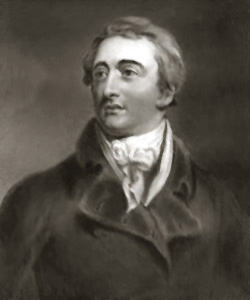 Lord William Bentinck played a very important role even with regard to the judicial reforms in India. In the work of judicial reforms, Bentinck was assisted by Bentinck Butterworth, Bayley and Holt Mackenzie. In 1829, Bentinck abolished the Provincial Courts of Appeal and Circuit. These courts were not functioning properly and their work was in arrears. These judges did not acquire sufficient knowledge and acquaintance with the people of the country. They failed to protect the people from the oppression of the police. The under trials were made to live in prisons for months before their cases were heard and disposed of. And that is an important reason as to why Bentinck had abolished those courts.
Lord William Bentinck played a very important role even with regard to the judicial reforms in India. In the work of judicial reforms, Bentinck was assisted by Bentinck Butterworth, Bayley and Holt Mackenzie. In 1829, Bentinck abolished the Provincial Courts of Appeal and Circuit. These courts were not functioning properly and their work was in arrears. These judges did not acquire sufficient knowledge and acquaintance with the people of the country. They failed to protect the people from the oppression of the police. The under trials were made to live in prisons for months before their cases were heard and disposed of. And that is an important reason as to why Bentinck had abolished those courts.
Lord Bentinck appointed Commissioners of Revenue and Circuit. The Bengal Presidency was divided into 20 divisions and a Commissioner was appointed for each division. The Commissioners were required to perform the same duties which formerly were performed by the Judges of the Provincial Courts of Appeal and Circuit. They were also given the duty of supervising the Collectors of Revenue and the police within their areas. However these Commissioners were themselves placed under the control of the Sadar Nizamat Adalat and Board of Revenue for their Criminal and Revenue functions respectively. A Regulation of 1829 provided that the Magistrates were to have the powers of awarding punishment of two year`s imprisonment with labour.
Appeals were to be taken to the Commissioners. A Regulation of 1831 provided for the summary disposal of cases relating to rent. Collectors were given the power to decide those cases summarily. Their decisions were taken to be final. Those could be reversed only by means of regular suits in civil courts. Another Regulation of 1831 provided that responsible Indians were to be appointed in the Zila Courts and City Courts.
Lord Bentinck made such arrangements that Indian judges could try cases up to the value of Rs 300. They were known as Munsifs. They got fixed salaries from the government. It was provided in 1831 that principal Sadar Amins were to be appointed by the Governor-General in-Council. It was decided that responsible Indians would be holding those offices. They were to get regular salaries. Appeals from the decisions could be taken to the Zila or City Courts. Neither the Amins nor the Munsifs were empowered to try cases in which the American and European British subjects were involved. Bentinck had decided to set up a separate Sadar Diwani Adalat and Sadar Nizamat Adalat at Allahabad and those courts started working from the beginning of 1832. A Regulation of 1832 had introduced a jury system in Bengal. Its object was to help the Europeans Judges to take advantage of the assistance of respectable Indians for the disposal of cases before them. European Judges were given the power to refer a case to a Panchayat of the Indians and the latter was to make enquiries regarding the matter in question and send a report to the judge. Provision was made for the Indian assessors to help the judges. They were required to give their opinions individually. Bentinck had abolished the use of Persian as Court language and ordered the use of vernacular languages for that purpose. This change which was brought about by Bentinck was a great boon to litigants who could express their grievances in their own language.



















